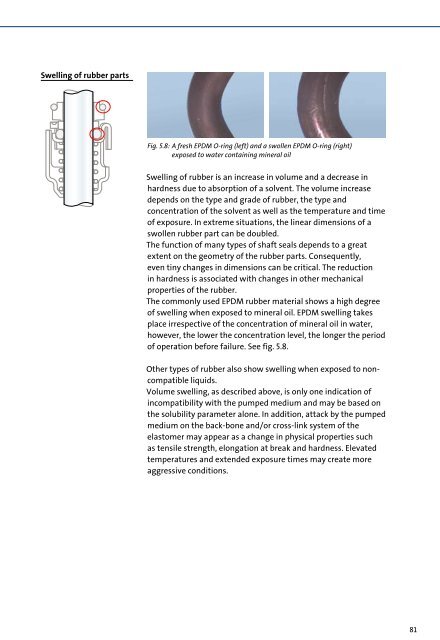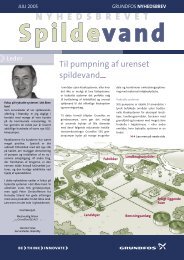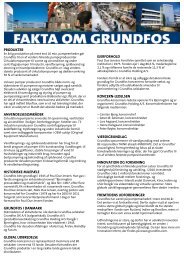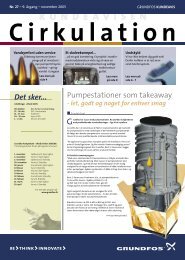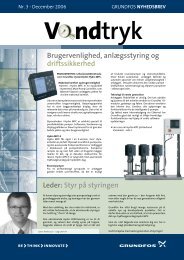Mechanical shaft seals for pumps - Grundfos
Mechanical shaft seals for pumps - Grundfos
Mechanical shaft seals for pumps - Grundfos
Create successful ePaper yourself
Turn your PDF publications into a flip-book with our unique Google optimized e-Paper software.
Swelling of rubber parts<br />
Fig. 5.8: A fresh EPDM O-ring (left) and a swollen EPDM O-ring (right)<br />
exposed to water containing mineral oil<br />
Swelling of rubber is an increase in volume and a decrease in<br />
hardness due to absorption of a solvent. The volume increase<br />
depends on the type and grade of rubber, the type and<br />
concentration of the solvent as well as the temperature and time<br />
of exposure. In extreme situations, the linear dimensions of a<br />
swollen rubber part can be doubled.<br />
The function of many types of <strong>shaft</strong> <strong>seals</strong> depends to a great<br />
extent on the geometry of the rubber parts. Consequently,<br />
even tiny changes in dimensions can be critical. The reduction<br />
in hardness is associated with changes in other mechanical<br />
properties of the rubber.<br />
The commonly used EPDM rubber material shows a high degree<br />
of swelling when exposed to mineral oil. EPDM swelling takes<br />
place irrespective of the concentration of mineral oil in water,<br />
however, the lower the concentration level, the longer the period<br />
of operation be<strong>for</strong>e failure. See fig. 5.8.<br />
Other types of rubber also show swelling when exposed to noncompatible<br />
liquids.<br />
Volume swelling, as described above, is only one indication of<br />
incompatibility with the pumped medium and may be based on<br />
the solubility parameter alone. In addition, attack by the pumped<br />
medium on the back-bone and/or cross-link system of the<br />
elastomer may appear as a change in physical properties such<br />
as tensile strength, elongation at break and hardness. Elevated<br />
temperatures and extended exposure times may create more<br />
aggressive conditions.<br />
81


